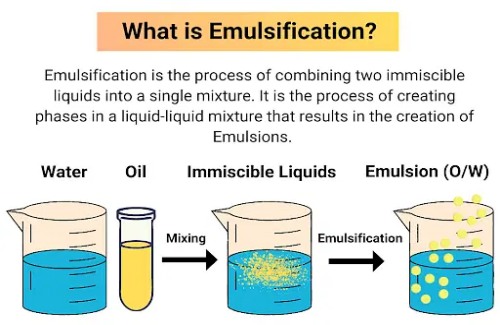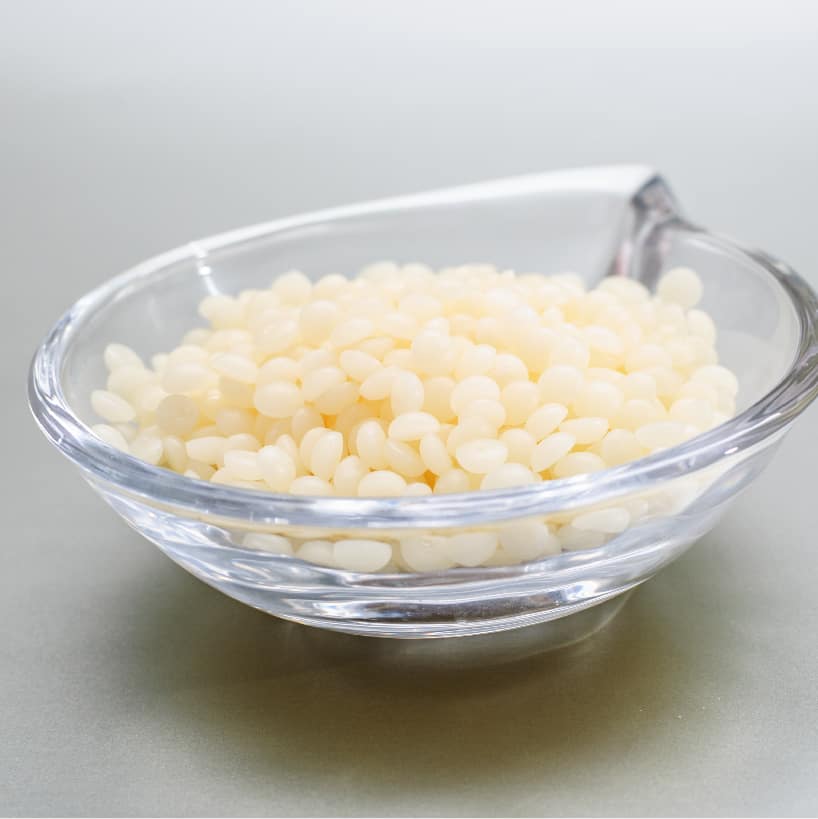Why Every Culinary Professional Should Master Emulsifier In Food
Wiki Article
Uncover the Benefits of Making Use Of an Emulsifier in Food for Enhanced Culinary Experiences
Emulsifiers are commonly forgotten yet essential components in culinary practices. They assist in the mixing of disparate ingredients, improving both flavor and structure. By guaranteeing security, emulsifiers protect against the unattractive separation of mixtures. Their flexibility covers various applications, from sauces to dressings. Comprehending their feature can lead to significant enhancements in food high quality and discussion. What particular advantages do emulsifiers supply that can transform everyday dishes right into phenomenal culinary experiences?Comprehending Emulsifiers: What They Are and Exactly how They Function
Emulsifiers play a crucial duty in the food sector, serving as representatives that assist in the mixing of water and oil, 2 compounds that usually do not mix. These compounds have both hydrophilic (water-attracting) and hydrophobic (oil-attracting) residential or commercial properties, allowing them to stabilize mixtures by minimizing the surface stress between the 2 phases. Usual emulsifiers include lecithin, mono- and diglycerides, and particular proteins.When included to food products, emulsifiers create a stable emulsion, preventing separation and ensuring a consistent appearance - Emulsifier In Food. They are crucial in several applications, varying from salad dressings and mayo to ice cream and sauces. By preserving the integrity of mixtures, emulsifiers not just improve the visual charm of food but likewise enhance mouthfeel and uniformity. Their capability to maintain emulsions makes them essential in modern food formula, adding considerably to the high quality and shelf life of numerous items
The Function of Emulsifiers in Taste Improvement
While often forgotten, emulsifiers considerably add to taste improvement in foodstuff. They play an important role in boosting the general preference experience by assuring that taste compounds are uniformly dispersed throughout a dish. By supporting emulsions, such as sauces or dressings, emulsifiers prevent the separation of oil and water, allowing flavors to fuse together better. This uniform distribution not only increases the taste but likewise ensures that each bite is consistently flavorful.Emulsifiers can improve the perception of particular tastes, making them extra obvious on the taste. They might connect with details ingredients, helping to launch unpredictable taste substances that add to a recipe's fragrant profile. The usage of emulsifiers can significantly boost the cooking experience, transforming basic dishes right into complex and fascinating taste journeys. Their subtle yet impactful role in taste improvement need to not be ignored in the art of cooking.
Emulsifiers and Structure: Creating Creamy and Velvety Cuisines
The effect of emulsifiers extends beyond taste enhancement to the domain of texture, where they contribute in creating silky and creamy dishes. By facilitating the uniform distribution of fats and water, emulsifiers make it possible for the formation of steady solutions, causing a glamorous mouthfeel. This is specifically noticeable in products like mayo, sauces, and dressings, where a smooth, creamy uniformity is preferred.Emulsifiers such as lecithin and mono- and diglycerides function to decrease surface stress in between ingredients, enabling a harmonious blend that boosts the sensory experience. The luscious texture attained through emulsification can boost dishes, making them a lot more enticing and pleasurable. In addition, the ability to create a silky structure permits cooks to incorporate different active ingredients without endangering that site consistency, resulting in ingenious culinary developments. Essentially, emulsifiers play a crucial function in transforming ordinary meals right into amazing cooking experiences through structure improvement.
Stability Matters: Exactly How Emulsifiers Prevent Separation
An important facet of culinary emulsifiers is their capacity to avoid separation, making certain that products preserve their designated structure and appearance in time. Emulsifiers function by stabilizing blends of oil and water, which naturally have a tendency to divide as a result of differences in density and polarity. By minimizing surface area stress at the oil-water interface, emulsifiers assist in the development of steady solutions, allowing for a consistent distribution of active ingredients.
Common Emulsifiers in Cooking and Their Applications
Comprehending the various emulsifiers commonly utilized in cooking exposes their considerable roles in boosting food structure and stability. Lecithin, originated from egg yolks or soybeans, is widely used in mayonnaise and salad dressings, giving a velvety consistency. Mustard, additionally an emulsifier, aids in supporting vinaigrettes while conveying taste.

Another popular emulsifier is xanthan gum tissue, frequently utilized in gluten-free baking and sauces for its thickening homes. Guar gum serves a comparable objective, enhancing the texture of gelato and dairy products.
Mono- and diglycerides, usually discovered in processed foods, assistance review enhance shelf life and preserve appearance. Finally, casein, a milk healthy protein, is utilized in cheese-making and creamy sauces, adding to a smooth mouthfeel. Read Full Report Each of these emulsifiers plays a necessary role in culinary applications, making sure desirable structures and avoiding splitting up in diverse food.
Regularly Asked Inquiries
Are Emulsifiers Safe for People With Food Allergies?
Emulsifiers can be safe for individuals with food allergic reactions, relying on the particular emulsifier used. It is necessary to recognize the source of the emulsifier, as some may activate allergic responses in sensitive people.
Exactly How Do Emulsifiers Affect the Nutritional Material of Food?
Emulsifiers can affect the nutritional material of food by boosting nutrient absorption and enhancing appearance. Their visibility may likewise weaken certain nutrients, depending on the food matrix, potentially changing general dietary worth.Can Emulsifiers Be Used in Vegan Cooking?
Emulsifiers can be properly used in vegan cooking, offering appearance and stability to recipes. Plant-based emulsifiers like lecithin, acquired from soy or sunflower, help blend active ingredients, improving the total quality of vegan culinary developments.What Are the Ecological Impacts of Emulsifier Manufacturing?
The environmental effects of emulsifier manufacturing frequently consist of deforestation, water air pollution, and high power intake. Furthermore, some sources of emulsifiers can contribute to biodiversity loss, increasing concerns about sustainability in food production practices.Just How Do Emulsifiers Contrast to Natural Thickeners in Food Preparation?
Emulsifiers provide smoother structures and boosted stability compared to natural thickeners, which can impart distinct tastes - Emulsifier In Food. While emulsifiers enhance mouthfeel and appearance, natural thickeners offer more health benefits and can add to the meal's flavor profileWhen included to food products, emulsifiers produce a stable emulsion, avoiding separation and ensuring a consistent appearance. While usually neglected, emulsifiers greatly contribute to taste enhancement in food products. Recognizing the numerous emulsifiers commonly used in cooking exposes their significant duties in improving food appearance and security. Emulsifiers can be secure for people with food allergic reactions, depending on the certain emulsifier utilized. Emulsifiers can influence the dietary content of food by boosting nutrition absorption and enhancing appearance.
Report this wiki page